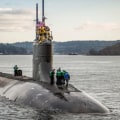For those who have experienced a nuclear war, the persistent radiation hazard could be a major concern for up to 1 to 5 years after the attack. The most immediate effect of a nuclear explosion is an intense burst of nuclear radiation, mainly gamma rays and neutrons. This direct radiation occurs in the weapon's own nuclear reactions and lasts for a very short time. Lethal direct radiation extends almost a mile from a 10-kiloton explosion.
However, with most weapons, direct radiation is not as important as other lethal effects that span greater distances. An exception is the enhanced radiation weapon, or neutron bomb, which maximizes direct radiation and minimizes other destructive effects. Electromagnetic pulse (EMP) damage can occur tens, hundreds, or thousands of kilometers away from a nuclear detonation, depending on the performance of the weapon and the altitude of the detonation. It is believed that dinosaurs became extinct due to climate change caused by atmospheric dust from an asteroid impact; this hypothesis was used to support winter nuclear research.
Most of the material damage caused by a nuclear blast is due to a combination of high static overpressures and strong winds. The Centers for Disease Control and Prevention (CDC) website provides information on the radioactive consequences of nuclear weapons tests conducted in the atmosphere around the world (global weapons tests) during the 1940s and 1950s. The American Cancer Society (ACS) regulations against the potential consequences of nuclear reactors focused on the power plant's capacity for the maximum credible accident (MCA). A total nuclear war would leave survivors with little means of recovery and could lead to a total collapse of society.
Since the end of nuclear weapons tests on the ground, daily radiation in air readings from monitoring sites has decreased. The difference is that the rays of a nuclear explosion are so intense that they do not need concentration to ignite flammable materials. Radioactive material, mostly fission products, is released into the environment by nuclear explosions. This notion referred to the nuclear reaction of two atmospheric nitrogen atoms that form carbon and one oxygen atom, with an associated release of energy.
The Comprehensive Nuclear-Test-Ban Treaty (CTBT) is a legally binding global ban on testing nuclear explosives. It has been estimated that more than half of the population of the United States could die directly in an all-out nuclear war. The radius of destruction is defined as the distance from a nuclear explosion within which destruction is near total, often taken as the 5 pounds per square inch overpressure zone. In a split second, the dense shock front obscures the fireball and continues to move beyond it, now expanding outwards, free of the fireball, causing a reduction in the light emanating from a nuclear detonation. But if there were to be a nuclear war, it would involve hundreds or thousands of explosions, creating an unprecedented situation.






